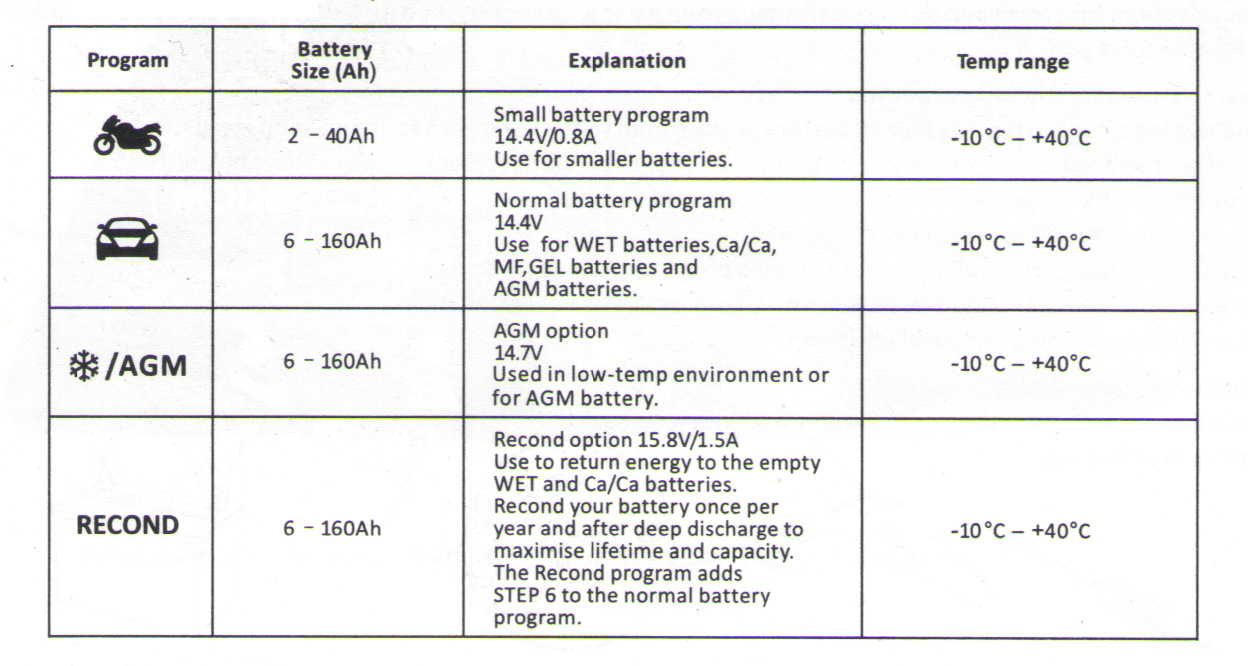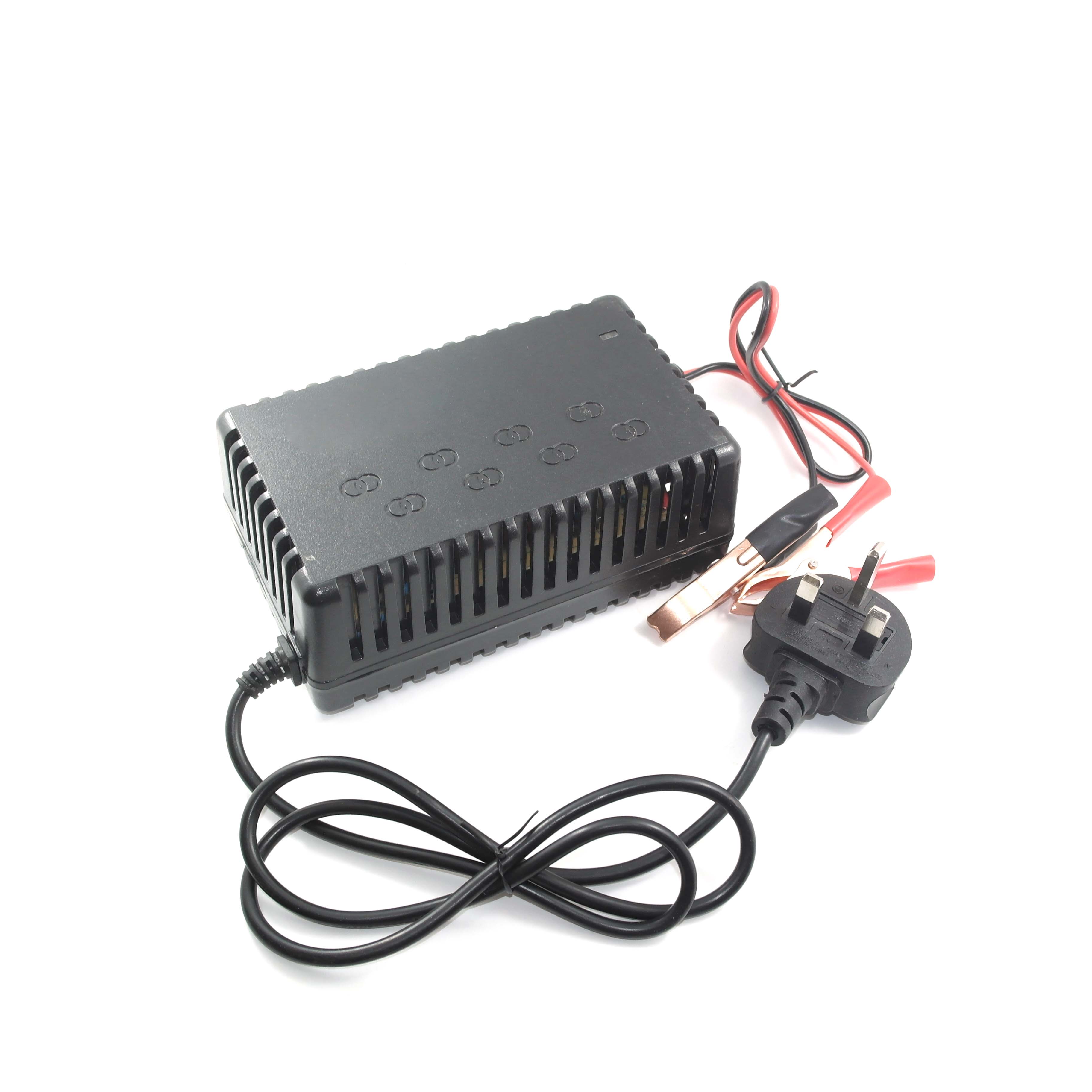12V 4A full automatic Battery Charger, Professional Lead-acid Battery Charger. Smart High-Frequency Charger, present the latest Technology of Battery Charger industry. CE RoHS FCC marked!
Model Nunber: KRE-180744-4491
PCB DESIGN Number: KRE-120400
General: 12V 4A full automatic Lead-acid Battery Charger.
This series are widely used for charging battery of Saloon Car, Sports Car, SUV, Caravan, Van, Pick-up, Motorcyle, Snowmobile, ATV, Launch, Solar System; and other Maintenance-free, AGM and Gel battery, etc

Charging separated lead-acid battery:
1. connect Red clamp or eyelet to Pos pole of battery("+"). Black clamp or eyelet to Neg pole of battery("-");
2. Insert mains plug into AC source socket;
3. For disconnection, first of all pull out the mains plug from AC source socket, then disconnect the clamps or eyelet from battery pole.
Charging vehicle-mounted lead-acid battery:
1. Connect the red clamp to the Pos pole of battery, black clamp to the vehicle chassis and keep away from fuel pipe and battery(If battery's Pos pole grounded, then connect black clamp to Neg pole, red clamp to vehicle chassis and keep away from fuel pipe and battery);
2. Insert mains plug into AC source socket;
3. Before disconnection, first of all pull out the mains plug from AC source socket;
4. Then disconnect black clamp before red clamp
(If battery's Pos pole grounded, then disconnect red clamp before black clamp)
1.Mcu controlled
2.7 stages switchmode
3.Desulphation
4.Overload protection
5.Over voltage protection
6.Over current protection
7.Most types of lead acid batteries including Calcium, GEL and AGM.

Connect in right way as requested, the power indicator ON (default charging program is "Car Mode"); setting program by pressing button"MODE", then the selected program will be activated after two seconds.
The following table explain different Charging Programs:


• The charger is designed for charging 12V lead-acid batterise. Do not use the charger for any other purpose.
• Check the charger cables prior to use. Ensure that no cracks have occurred in the cables or in the bend protection. A charger with damaged cables must not be used. A damaged must be replaced by a related professional.
• Never charge a damaged battery.
• Never charge a frozen battery.
• Never place the charger ventilation during charging.
• Always provide for charger on top of the battery when charging.
• Avoid covering the charger.
• A battery being charged could emit explosive gasses. Prevent sparks close to the battery.
When batteries are reaching the end of their lifecycle internal sparks may occur.
• All batteries fail sooner or later. A battery that fails during charging is normally taken care of by the chargers advanced control, but some rare errors in the battery could still exist.
Don't leave any battery during charging unattended for a longer period of time.
• Ensure that the cabling does not jam or comes into contact with hot surfaces or sharp edges.
• Battery acid is corrosive. Rinse immediately with water if acid comes into contact with skin or eyes, seek immediate medical advice.
• Always check that the charger has switched to Step 7(floating status)before leaving the charger unattended and connected for long periods. If the charger has not switched to Step 7(floating status) within 55 hours, this is an indication of an error. Manually disconnect the charger.
• Batteries consume water during use and charging. For batteries where water can be added, the water level should be checked regularly. If the water level is low add distilled water
• This appliance is not designed for use by young children or people who cannot read or understand the manual unless they are under the supervision of a responsible person to ensure that they can use the battery charger safely. Store and use the battery charger out of the reach of children, and ensure that children cannot play with the charger.
• Connection to the mains supply must be in accordance with the national refulations for electrical installations.





